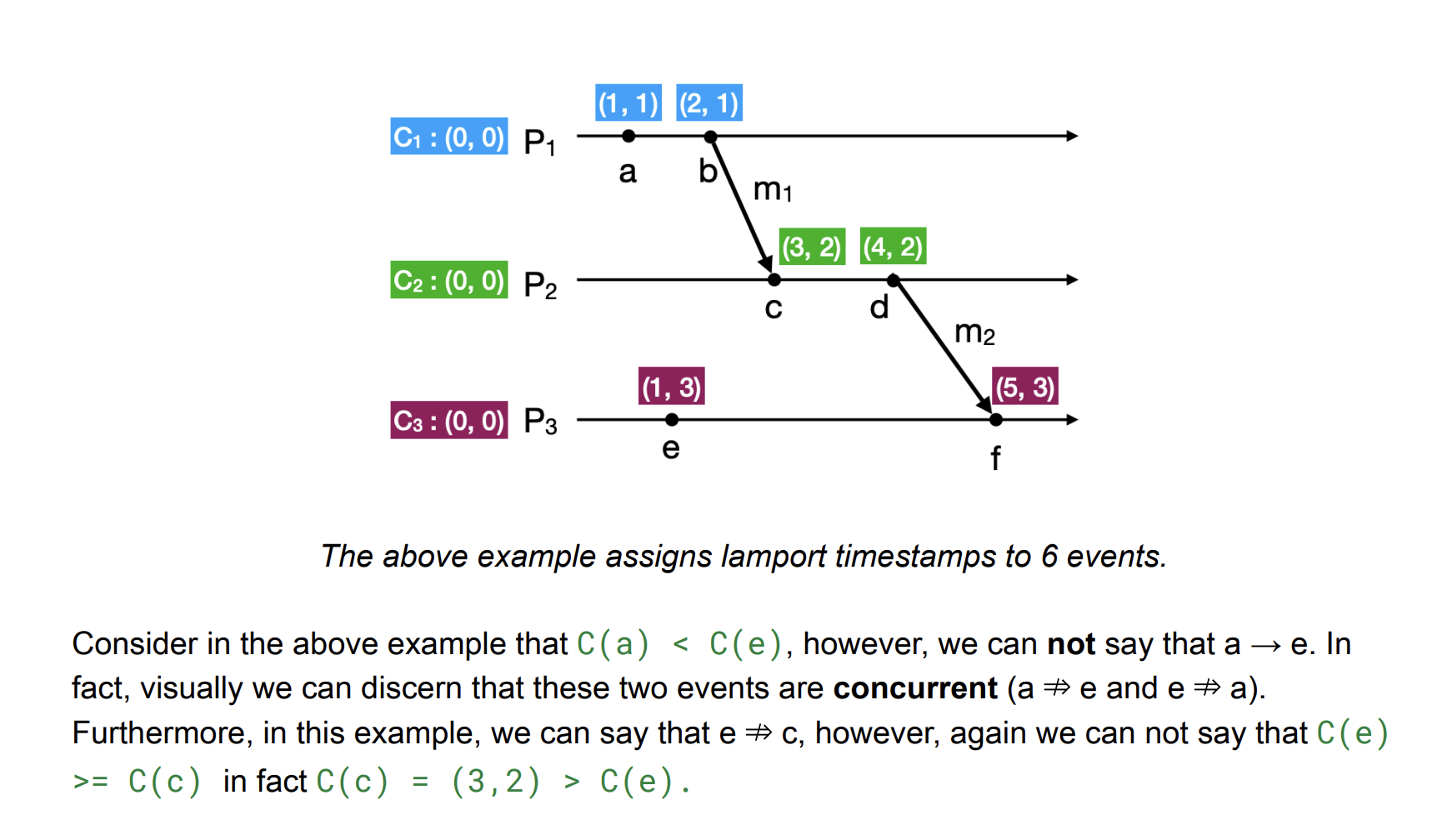13 Lamport Clocks
(Ci, id)
- Ci - highest known logical time
- id - id of the process/server
- Internal Event a
- Ci := Ci + 1
- Event “send m”
- Ci := Ci+1
- ts(m)=Ci
- Event Receive m with ts(m)
- Ci = max(Ci , ts) + 1
(C1, id1) > (C2, id2) iff C1 > C2 or (C1 = C2 and id1 > id2).
(C1, id1) = (C2, id2) iff C1 = C2 and id1= id2.

Totally Ordered Multicast
ensures every server applies operations in exactly the same order
An example execution:
- Roughly simultaneously, +1000 arrives at S1, and %1 arrives at S2. Both are added to
respective queues with timestamps (1,1) for S1 and (1,2) for S2. - S1 sends a request for ACK +1000 to S2.
- S2 sends a request for ACK 1% to S1.
- S2 receives ACK, +1000 (1,1) is at the front of the queue.
a. marks locally that 2 have acknowledged +1000, applies +1000
b. Increments Lamport ts to (2,2)
c. (Note that any new messages received at this point would be timestamped as (3,2) for example) - S1 receives ACK %1(1,2), enqueues behind +1000 (1,1). Thus, does not apply anything.
- S2 receives ACK %1, applies %1.
- S1 receives ACK +1000, thus has ACKS=2, and can apply +1000, and then apply %1.